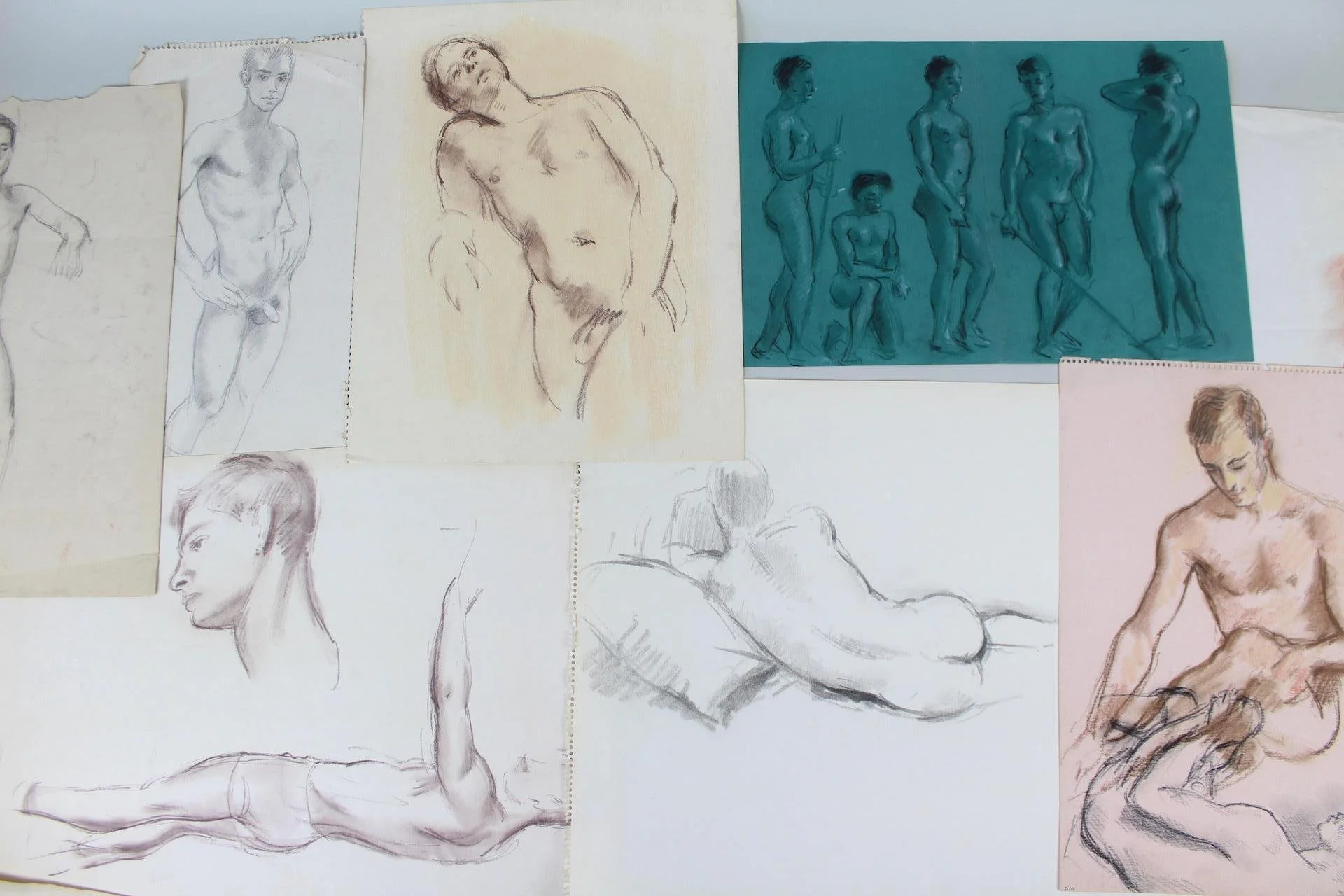The Artist's Discipline
The title of Public Sale’s upcoming auction, Disciplined, refers to the artist’s focused study—in both the sense of the field, medium, or branch of artistic production in which an artist specializes, as well the self-managed conduct and rules by which an artist structures their practice.
The auction is so named partly because it includes fine art of many periods and styles. And together these works offer glimpses into the artist’s process, and the kind of attentions, attitudes, and systems that an artist must continually cultivate alongside their primary training in painting, photography, or other forms.
On several of the works in Lot 101, a collection of male nude drawings by 20th C. NYC artist Vito Tomasello, there are notations of duration on the papers, presumably indicating the length of time Tomasello spent on each drawing. The dates written nearby are from the peak influence of Taylorism, that principle of scientific management focused partly on time studies in the efficiency of labor. Here is the artist administering his own time tracking with a kind of self-discipline.
A few generations earlier, artist Joseph Karl Stieler painted a portrait in miniature of one Lady Jane of Erskine (Lot 105.) One can imagine the discipline Stieler must have had not only to produce such a finely detailed painting, but also to please his patrons enough to retain his post of royal court painter to Bavarian kings for over thirty years.
And a few generations after Tomasello, itinerant woodcarver and outside artist Jonathan Kendall created a small oeuvre in a style some call “Byzantine Revival,” two fine examples of which are shown in Lots 504 and 505. A fixture of the Provincetown area of Cape Cod, Kendall made the famous doors at the Wellfleet Preservation Hall and became known as a kind of local mystic, evoking an era when much art was produced in religious contexts and the rigors of one’s creative practice may have been difficult to distinguish from discipline of a spiritual kind.
Discipline may look very different for different artists from different eras, but it is a constant demand of artistic practice, and may be seen as a longstanding tradition that has led somewhat paradoxically to the creation of so many artworks which appear to us as free, wild, hybrid, or undisciplined. Or to works that do not require of their audience the same discipline. (As Nathaniel Hawthorne put it: “Easy reading is damn hard writing.”) For this and so many other reasons, we celebrate the focused studies of artists—whatever that may mean—and we’re glad that auctions can be a way for their work to find new admirers, new homes, and new value.




